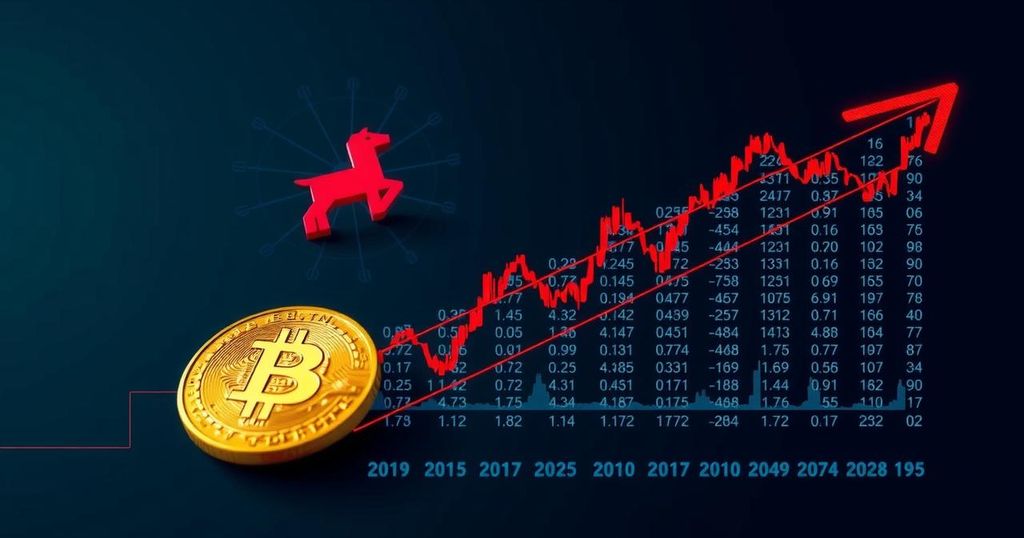Bitcoin’s Market Dynamics: Analyzing Post-Election Trends and Economic Influences
Bitcoin has remained stagnant post-halving, while gold prices surged amid global economic concerns. Miners face low revenue per transaction, historically linked to rising prices, but Bitcoin has yet to reach previous highs. Current market dynamics may be setting the stage for a potential bull market, despite market uncertainties.
As Bitcoin continues to navigate the post-election landscape, it finds itself in a complex position after enduring seven months since its last halving, which halved its annual supply growth from 330,000 units to 165,000. Traditionally, Bitcoin has experienced significant price rallies following halvings; however, recent price movements have been relatively flat, holding within a narrow historical range despite notable short-term volatility. This contrasts starkly with the significant upward momentum seen in gold prices, which have surged due to extensive central-bank purchasing and heightened investor concerns over escalating budget deficits across major economies. The economic environment has shifted notably, as fiat currencies face skepticism amid expansive central-bank easing that renders them less attractive compared to hard assets. Given Bitcoin’s previous performance during prolonged periods of low interest rates, especially from 2009 to 2021, there is a possibility that similar conditions may favor cryptocurrency growth again. Despite the growing popularity of exchange-traded funds (ETFs), which may enhance transactional volume on the Bitcoin blockchain, prices remain stagnant following a modest rally earlier in the year. Currently, miners’ revenue per transaction has reached unusually low levels, a situation often preceding upward movements in Bitcoin’s price. Historically, low miner revenue is seen as a precursor to bull markets. Despite the current rise in transactional activity and the controlled rate of new Bitcoin supply due to the halving, prices have yet to breach previous record highs convincingly, leaving uncertainty regarding the onset of a new bull market. The incremental developments, including an increase in Bitcoin ETFs and transaction numbers, may set the stage for future growth, but persistent determination remains needed to overcome current market limitations.
Bitcoin’s halving events, which occur approximately every four years, significantly influence its supply dynamics. Each halving reduces the rate at which new Bitcoins are created, traditionally leading to supply shocks that can spur price increases. Despite this historical trend, the post-halving price movements have not materialized in the anticipated manner following the latest halving. The fluctuation in Bitcoin’s price amid global economic conditions, including deficits and fiat currency devaluation, adds layers of complexity to its market behavior, making the analysis crucial for potential investors and market participants.
In summary, while Bitcoin’s recent performance has displayed volatility and potential indicators of a brewing bull market due to low miner revenue and increased transaction volumes, it has not yet regained its record heights. Current economic factors favoring hard assets over fiat currencies could ultimately benefit Bitcoin. Nevertheless, investors should remain cautious given the cryptocurrency’s stagnant prices despite broader market interest and demand.
Original Source: www.cmegroup.com






Post Comment